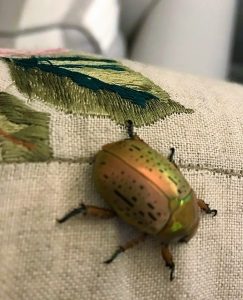
It has been very moving to see people beginning to go back to some parts of the lives they once knew and sharing their excitement with us via our screens. One little boy in Italy after weeks of lockdown couldn’t contain his happiness at going back to the park to feed the ducks. Simple pleasures we took for granted are now being savoured as we show gratitude for the return of what we had lost.
Feelings of gratitude flood our brains with the chemical dopamine and when we are genuinely grateful for something or someone, our brains reward us by giving us a natural high. When we feel grateful, we can improve our ability to cope with stressful, negative and frustrating situations.
Being grateful requires us do to 2 things – first – to notice and second – to savour the positives in our daily experiences. Gratitude takes practice to help it become a habit, and it is well worth the effort.
Proven Benefits of Gratitude
Research from various Universities* is showing that developing an attitude of gratitude is one of the simplest and most powerful things we can do to increase our satisfaction with life. Not only is gratitude the key to psychological well-being, it has also been shown to –
• improve the quality and duration of our sleep
• make us more optimistic
• enhance our empathy and social relationships
• increase our sense of self-esteem
• reduce our tendency for envy and resentment
• facilitate positive emotions
• help us to be more patient
These are all positive and life-enhancing emotions that we need at any time, but they may be even more necessary during these uncertain times.
*University of California, Penn State University, University of Miami amongst others
The Neuroscience of Gratitude
Neuroscience has shown that our brain is 5 times more likely to notice negatives than positives (our negativity bias) and there is a saying that our brain is ‘like Velcro to the negatives and like Teflon to the positives’. This bias to the negative is an important mechanism to help keep us safe, but it can also blind us to seeing and appreciating the positives in life.
Scanning for the Good
We can train our brain to notice the positives and balance our negativity. It is the process of actively scanning all our experiences and finding the positives that builds our capability to notice them and then to savour them.
One participant in our ‘Dealing with Change and Building Resilience’ program started asking her children at dinner to recount 1 thing that went well that day. When they started listing negatives (as brains are set up to do) she stopped them and told them that this was not the place for negatives. After a couple of weeks of this daily practice, when she asked “what is 1 thing that went well today?”, the answer she got was “oh there were so many, it is hard to choose one!”
Practising Gratitude
We can take specific action to ‘practise an attitude of gratitude’ and here are 4 simple ways to do this –
1. Take Photographs
In a TEDx talk by Hailey Bartholomew she explains that practising gratitude helped her with depression and in her 365 Grateful project she took a photograph everyday of something she was grateful for. It changed her life.
Here is a photo a friend took of a Christmas beetle – how amazing is nature!
1. The 3 Good Things/3 Blessings Exercise
Martin Seligman, founder of the Positive Psychology movement, created the 3 good things exercise. At the end of each day reflect on 3 things that you would consider to be good and WHY they were good. Seligman’s work with the US military on this exercise is resulting in reduced levels of PTSD, depression and suicide.
I (Anne) used this activity when I was going through a particularly bad relationship break up. At first it was hard to identify the positive things in my day, but after a few days of remembering 3 good things and writing them down before I went to sleep, I was not only sleeping better but feeling happier.
Regular gratitude journalling has been shown to result in 5% to 15% increases in optimism (Amin 2014), meaning that the more we think about what we are grateful for, the more we find to be grateful for!
The Greater Good Science Centre has a free 21 day gratitude challenge and online journal.
2. Now that you have time……
Consider writing an old-fashioned card or letter and mailing it to someone you appreciate. Research from Penn State University showed that a handmade card delivered unexpectedly created surges in positive mood and wellbeing. What trumps everything is a letter or card that expresses gratitude for the person.
3. Give up Comparing
This short (1m 10s) but powerful video brings everything back into perspective when we start to compare. Be grateful for what you got
In Summary
By practising gratitude on a daily basis, we can start to live gratefully and appreciate life to its fullest at all times, retraining our brains to notice even the smallest of joys, and at the same time, boosting our powers of resilience.
So what are you grateful for today?
Go well, stay safe and get in touch if we can help.
Anne and Clare

Leave a Reply